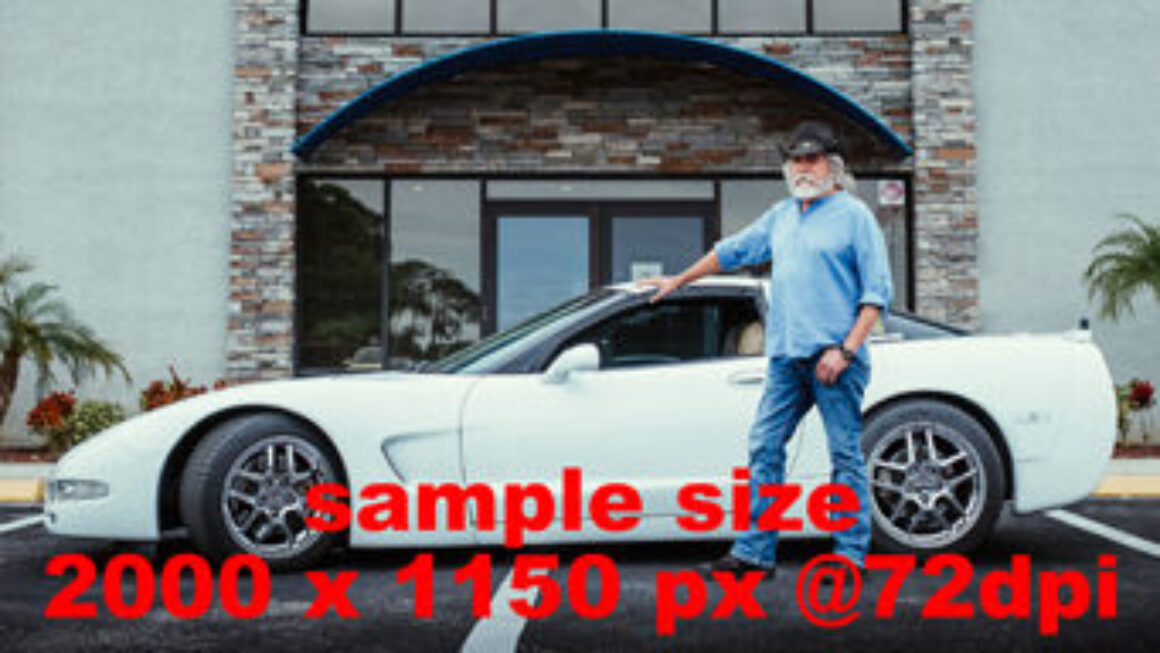A Corvette That’s Never Not Been a Racer!
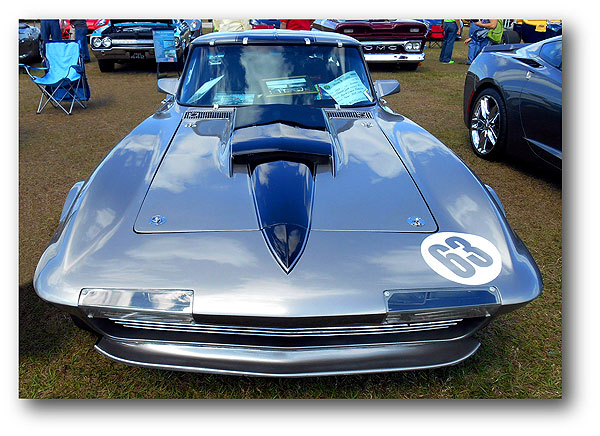
Dateline: 6-15-17 – Ken Hazelton’s 1963 Split-Window Coupe Corvette Sting Ray is a unique car. Ken’s Corvette has never been a streetcar. Although born to be a street sports car, this Sting Ray has never been anything but a racecar. Zora Arkus-Duntov was the driving force behind making sure that production Corvettes could be easily turned into competitive racecars. He was famous for saying, “I want my customers to enjoy their Corvette.” Even though he was in the engineering department and not sales and marketing, he thought like a salesman. Duntov’s insistence that Corvette customers had access to Chevrolet engineered parts for racing, created the Corvette’s halo of racing.
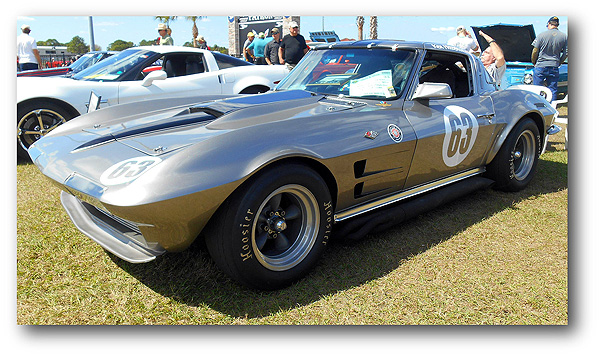
Unlike any other American automobile, the Corvette was born to be a racer. In 1951 when Harley Earl went to his first sportscar race at Watkins Glen, he saw the raw enthusiasm for the new breed of small cars from Europe – sports cars. Earl was an automotive genius and pioneer, who often saw possibilities where most did not. For the most part, Americans preferred big cars. But Earl reasoned, “Why should the Europeans have all the fun and racing glory? There should be an America sportscar.” The rest, of course, is history.
Because “racing” was built into the Corvette’s DNA, the car attracted others that saw potential for greatness. Without men such as Ed Cole, Zora Arkus-Duntov, Mauri Rose, Bill Mitchell, and many others, the little plastic Chevy without a market would have died on the vine. Early Corvettes were more like modern pilot cars. This would never happen today and it fact nearly killed the concept, as many were not so good. But passion and racing saved the day.
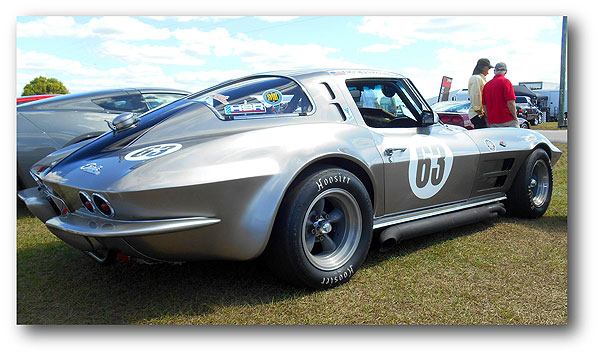
The first factory-built Corvette racecar was quietly release in 1954 as a NASCAR racer. We covered this car in the April 2017 issue of Vette Vues. From this point, all the way to 1962, the hard-core racer-type engineers (Duntov, Rose, and others) kept honing and refining the Corvette. By the late 1950s Corvette racecars were contenders on the racetrack. We need to point out that the winning Corvettes of the late 1950s and early 1960s (the Purple People Eater, the Gulf One cars, Dave MacDonald’s cars, Dick Guldstrand, and others) all used the basic frame and chassis laid out by suspension engineer Maurice Olley in 1952, but with improvements in shocks, steering settings, mounting points, brakes, engine and drivetrain improvements. That’s called, “development”.
By 1960 when it was time to start designing an all-new Corvette, Duntov already had his wish list in his shirt pocket. The 1957 Q-Corvette was way ahead of its time. The Peter Brock and Bob Veryzer’s body design would be the starting point for what would become the 1963 Sting Ray. Under the pretty fiberglass Duntov wanted a fuel-injected, all-aluminum small-block engine, four-wheel disc brakes, independent suspension, and a transaxle.
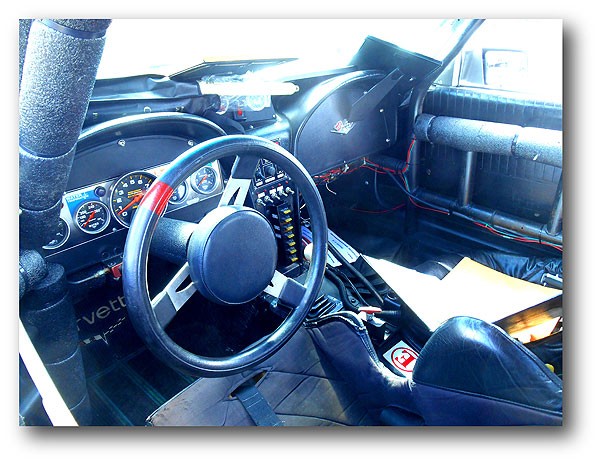
Zora didn’t get everything he wanted, but he got a lot. The new Corvette had a vastly improved perimeter frame that allowed the passengers to sit lower, thus lowering the roofline and center of gravity. The suspension was four-wheel independent, the first in American production car history. Disc brakes took longer to develop and didn’t come online until 1965, and the all-aluminum small-block Chevy just wasn’t strong enough. Regardless, the new Sting Ray was vastly superior to its predecessor.
To take care of his racing customers, RPO Z06 was Zora’s latest racer kit and THE hot setup. RPO Z06 was all about brakes and suspension and cost a whopping $1,818, plus $430 for the L84 Fuelie, $188 for the 4-speed, and $$43 for the Posi rear – all on top of the $4,252 base price for a grand total of $6,731. For comparison, a 1963 Impala Super Sport listed for around $2,700!
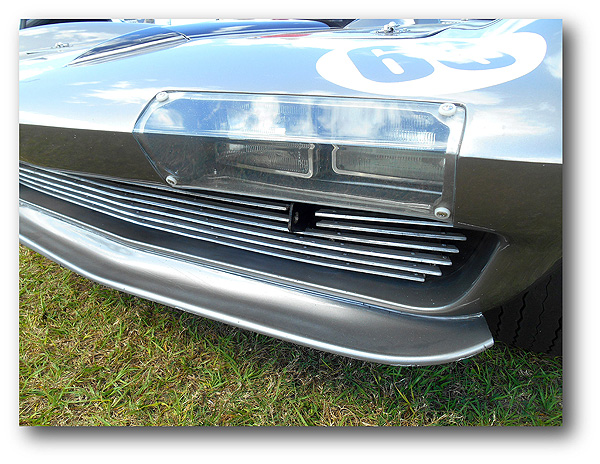
In the early days of the Sting Ray, the 1963 Z06 was the tip of the spear for Corvette racecars. But by 1965 and 1966 when the big-block Vettes hit the track, no one was looking at the Z06 cars.
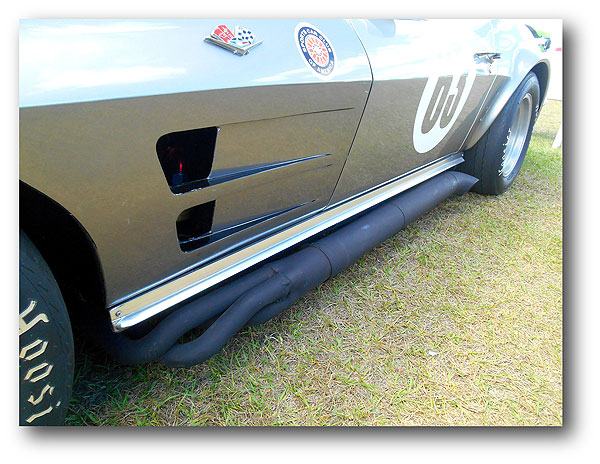
Typically, most Corvette buyers with a desire to race start out racing their street Vette. Cars get modified to the point where they’re no longer suitable for street use, and become track-only machines. After all, Corvettes have always been premium-priced cars. The base price for a 1963 Corvette was $4,252. For $5.026 a customer could get a new 1963 Cadillac Series 62 Hardtop Coupe luxury car. So, buying a new Corvette to make into a racecar was for those with deep pockets – even back in the day.
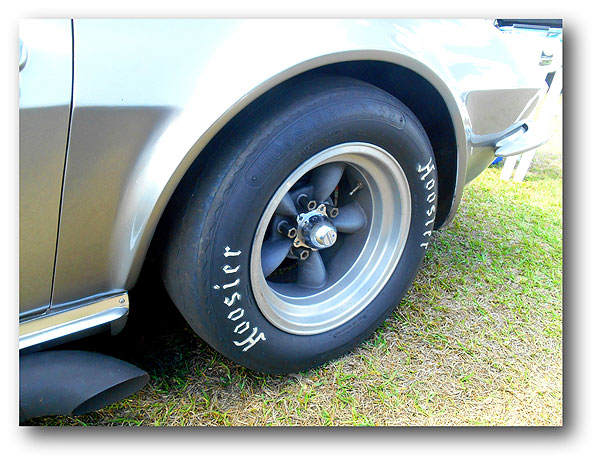
Ken Hazelton’s Sting Ray is one such car. It also shows that not everyone raced Z06 and Fuelie Corvettes. When Ken bought the car in 1991, it was pretty much in its original racing configuration. The car was raced occasionally and never abused or wrecked. Frame was excellent, body was great except for a damaged nose. It looked like a jigsaw puzzle that someone put back together and not very well. Ken replaced the nose, mid tire forward with an original style nose. The 327 small-block with a Holly carburetor was not the original motor, but similar to what it came with from the factory. It had a 1965 drivetrain with a M22 transmission, and a heavy-duty rear with 3.55 gears. The car came with a 3.70 rear that Ken used until it broke, then replaced it with a 3:90, and eventually a 3.55 gear-set.
The suspension was amazingly stock, with a few racer tricks. The front coil springs were clipped to lower the front. The rear spring setup used the old-school trick of placing the shortest top spring that was typically the stiffest, on the bottom of the spring stack to help stiffen the spring set. Racing shocks were on all four corners and to accommodate the overall lowering of the car, the wheel wells were radius cut out, with no flares. The interior had a four-point roll bar and nothing else fancy.
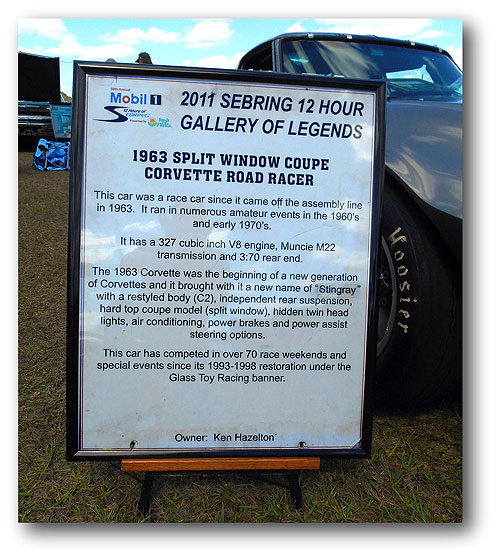 Lets back up a little and talk about how Ken Hazelton got into his 28 year-old Corvette racecar back in 1991. Ken has a BS in Engineering from the University of South Florida with an elective in Computer Science. His computer specialty is in mainframe computer programming for financial and insurance intuitions. Early in his career he worked with Ross Perot at EDS.
Lets back up a little and talk about how Ken Hazelton got into his 28 year-old Corvette racecar back in 1991. Ken has a BS in Engineering from the University of South Florida with an elective in Computer Science. His computer specialty is in mainframe computer programming for financial and insurance intuitions. Early in his career he worked with Ross Perot at EDS.
Ken was a typical car guy of his generation, always working on cars that included an old Mercury hardtop, a 1957 Chevy Bel Air, and a few Mustangs. Then one day his wife came home and told him she wanted a Corvette. They found a 1968 Le Mans Blue Convertible with a blue interior that originally had a 427/435 L71 big-block that was long-gone and had been replaced with a small-block. For a while it was a nice daily driver until ken got the bug to make the car right and bring it back to its original configuration.
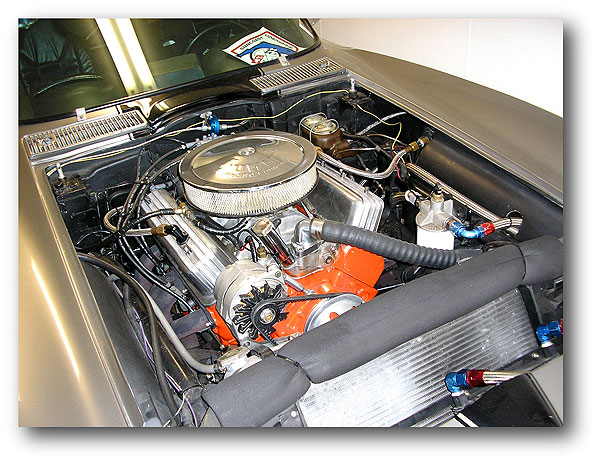
You could say that Ken had the Corvette infection at this point. After a while he sold the 1968 Corvette and then went on to own several other Corvettes. Ken eventually got the itch to go racing, but wanted to do it right. He got his SCCA drivers license and started learning with with Larry Vanscoy’s Bugeye Sprite. These are great little cars to start with, but in his heart he knew he wanted to race a Corvette.
In 1991, at a club meeting a member told Ken that there was an old Sting Ray racer for sale that he might be interested in. Old racecars typically live very hard lives and are often sold and resold until they’re pretty much used up. When Ken went to look at the car he was delighted to find not only a 1963 Sting Ray, but a Split-Window Coupe – and it was in very good condition. Ken’s wife, thinking that the car would be converted into a streetcar, asked, “Can you fix it up?” Ken, thinking that this would replace Larry Vanscoy’s Bugeye Sprite ride, said, “Sure!”
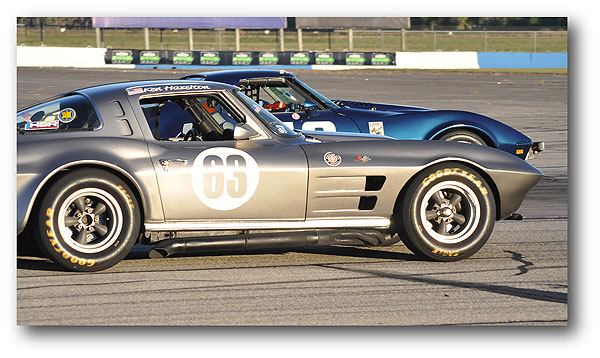
The Hazelton’s bought the old racer and didn’t do much with it for two years. Ken was attending lots of vintage races and a plan started to form. He started the restoration project in 1993 with the objective of not going full out with a trick frame and modern suspension. Ken wanted to enjoy the experience of racing a Corvette, 1960s style, but upgraded with modern equipment.
First, a modern GT1-style roll cage was installed. The suspension was treated to new shocks, bushings, etc, and given a thorough going over. The drivetrain was basically left as-is, with the Muncie M22 Rock Crusher four-speed, heavy-duty 3.70 rear axle spider gears, and heavy duty half-shafts. A fresh, but mild 327 was dropped in with a big Holly carb, header side-pipes, and a new MSD ignition system. Ken doesn’t flog the pants off the 327, so he keeps his shift points at 6300 rpm. Later, when Ken upgraded the engine to a 350, he installed a Tex 101A Racing 4-speed Transmission. This is the same transmission used in NASCAR cars with no-clutch shifting.
American Racing Wheels are 15×8-inchs on all fours; shod with Hoosier racing tires, 225-60-15 on the front and 235-60-15 on the rear. A mandatory fuel cell was installed. The rear trailing arms are off-set to allow for wider rear tires and are from Van Steel. Later Ken installed a 350 small-block for more reliability. The 350 block has 4-bolt mains, 12:1 compression, roller rockers, and dynoed at 480-horsepower. The lust for power is often irresistible, but Ken did not want to go with a big-block that tends to stress everything from the flywheel back in an older car.
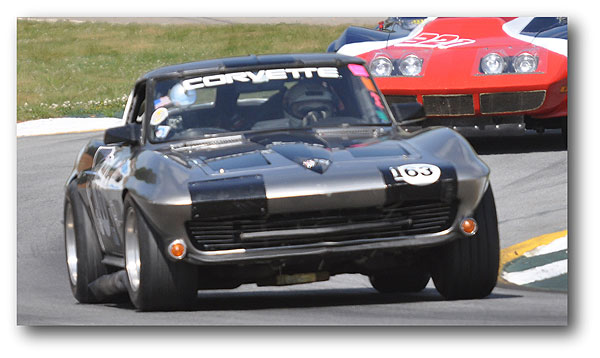
The exterior of the Sting Ray was treated to numerous subtle tricks. As purchased, the wheel wells were radius cut up above the horizontal crease line and into the fender humps. Ken installed proper flares so that the car didn’t look like a dirt track racer. The stock fuel filler door has been replaced with a racing quick-fill cap that accesses the fuel cell fuel cap. The front fender vents were cut out and made functional, resembling those on the 1963 Grand Sport Corvettes. The chin-spoiler helps reduce front-end lift and the stock headlights were replaced with rectangular racing lights behind form-filling plexi. What is not so obvious is that there’s a subtle droop from the wheel wells forward. Between the droop, spoiler, and fender vents, Ken does not experience the dreaded “front end lift.”
Racecars typically live hard lives. On Labor Day 2011 at Sebring while competing in an SCCA Vintage race, Ken had a little incident that lead to a change in the car’s looks. Heading down the backstretch at about 140 mph the crankshaft broke just behind #2 rod. As a result engine block was broke and oiled the rear tires, sending Ken into a long sideways skid. The nose hit the concrete wall just before turn 17, turned the car backwards, facing traffic in the middle of turn 17!
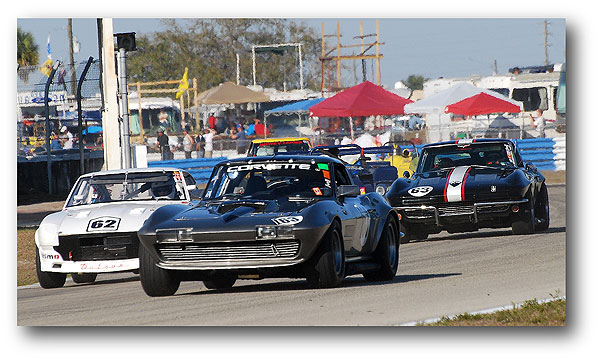
The impact was minimal and the damage was thankfully all fiberglass, but the front clip, hood, radiator, oil cooler, etc. were destroyed. That’s when Ken found the Eckler front clip with flares and rectangular headlight kit. The front clip was actually “old glass”, purchased by a guy in Georgia in the late 60’s and had the original Eckler stickers on it. Since he needed a new hood, Ken also decided to put a 1967 big block hood on the car. In a sense, it was a second restoration.
So, what was Ken’s racing experience like with his vintage small-Block Sting Ray? Remember, Ken was relatively new to SCCA sportscar racing, plus, his only track experience was with Larry Vanscoy’s Bugeye Sprite. He reports that it took a while to get used to being out on the track with a much more powerful racecar. But after he got used to the car, he started becoming competitive at local SCCA races, winning a few races here and there. He’s even had racing fun with his Sting Ray at tracks all over the country. On tracks such as Sebring, the car will hit 135-to-140-mph on the main stretch. At the long banked Daytona track using 3.55 gearing, the Corvette can hit 150-mph. Remember; this is a 54-year old Corvette that is still being raced. We should also mention that Ken has a 1972 Corvette racer, which for a retired computer programmer and amateur racer, is one racecar too many. So, the 1963 Sting Ray is For Sale.
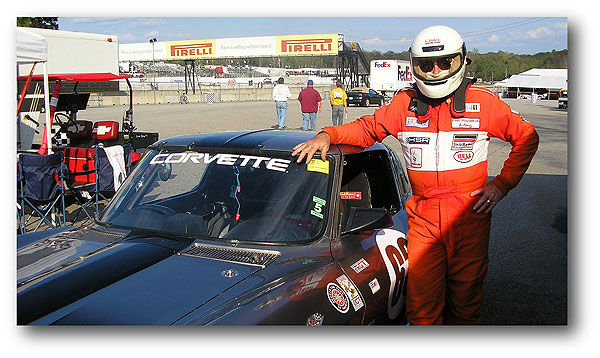
Ken’s experience with his “never driven on the street” 1963 Corvette Sting Ray Split-Window Coupe racecar is the fulfillment of Duntov’s wish that every Corvette customer enjoy their car. And since Zora was always thinking about his racers, it makes this survivor Sting Ray racer extra special. – Scott

